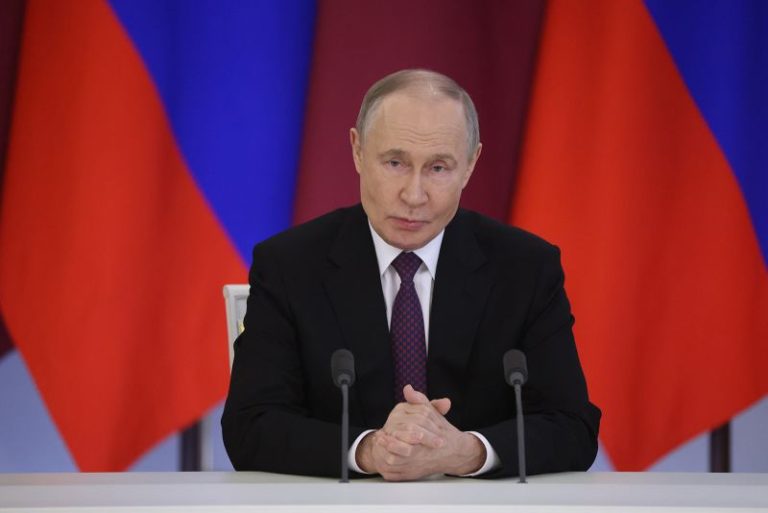Athena Gold Corporation (CSE:ATHA) (OTCQB:AHNR) (‘Athena Gold’ or the ‘Company’) is pleased to announce that due to strong demand, the Company has increased the size of the non-brokered flow-through private placement previously announced on April 7, 2025, from $500,000 to $700,000 (the ‘FT Offering’). The FT Offering, as amended, will now consist of up to 14,000,000 flow-through common shares (the ‘FT Shares’) (increased from 10,000,000 FT Shares) at a price of $0.05 per FT Share. All other terms of the FT Offering remain unchanged.
Non-Flow-Through Unit Private Placement
The Company further announces a non-brokered private placement for gross proceeds of up to $200,000 comprised of up to 4,000,000 units (each, a ‘Unit’) at a price of $0.05 per Unit (the ‘NFT Offering’).
Each Unit consists of one non-flow-through common share in the capital of the Company (a ‘NFT Common Share’) and one-half of a common share purchase warrant (a ‘Warrant’). Each whole Warrant is exercisable into one NFT Common Share at a price of $0.12 per Warrant for a period of thirty-six months from the date of issuance, subject to the following acceleration provision. If, at any time after the date that is 4 months and one day after the date of issuance of the Warrants, the average volume weighted trading price of the Company’s Common Shares on the Canadian Securities Exchange is at or above $0.20 per share for a period of 10 consecutive trading days (the ‘Triggering Event’), the Company may at any time, after the Triggering Event, accelerate the expiry date of the Warrants by giving ten calendar days notice to the holders of the Warrants, by way of news release, and in such case the Warrants will expire on the first day that is 30 calendar days after the date on which such notice is given by the Company announcing the Triggering Event.
The securities to be issued under the NFT Offering will be offered pursuant to Section 2.3 of National Instrument 45-106 (the ‘accredited investor’ exemption). All securities issued in connection with the NFT Offering will be subject to a hold period which will expire four months and one day from the date of closing of the NFT Offering.
A finder’s fee may be paid in connection with the NFT Offering to eligible arm’s length finders in accordance with CSE policies and applicable securities laws. The NFT Offering is subject to several conditions, including receipt of all necessary corporate and regulatory approvals, including that of the Board and the Canadian Securities Exchange (‘CSE’).
Insiders may participate in the NFT Offering and will be considered a related party transaction subject to Multilateral Instrument 61-101 – Protection of Minority Security Holders in Special Transactions (‘MI 61-101’). The Company intends to rely on exemptions from the formal valuation and minority shareholder approval requirements provided under subsections 5.5(a) and 5.7(a) of MI 61-101 on the basis that participation in the NFT Offering by insiders will not exceed 25% of the fair market value of the Company’s market capitalization.
Proceeds of the NFT Offering will be used to fund exploration work on the Company’s various properties.
None of the foregoing securities have been or will be registered under the United States Securities Act of 1933, as amended (the ‘1933 Act’) or any applicable state securities laws and may not be offered or sold in the United States or to, or for the account or benefit of, U.S. persons (as defined in Regulation S under the 1933 Act) or persons in the United States absent registration or an applicable exemption from such registration requirements. This press release does not constitute an offer to sell or the solicitation of an offer to buy nor will there be any sale of the foregoing securities in any jurisdiction in which such offer, solicitation or sale would be unlawful.
About Athena Gold Corporation
Athena Gold is engaged in the business of mineral exploration and the acquisition of mineral property assets. Its objective is to locate and develop economic precious and base metal properties of merit and to conduct additional exploration drilling and studies on its projects across North America. Athena Gold’s Excelsior Springs Au-Ag project is located in the prolific Walker Lane Trend in Nevada. Excelsior Springs spans 1,675 ha and covers at least three historic mines along the Palmetto Mountain trend, where the Company is following up on a recent shallow oxide gold discovery, with drill results including 5.35 g/t Au over 33.5 m. Meanwhile, the Company’s new Laird Lake project is situated in the Red Lake Gold District of Ontario, covering 4,158 hectares along more than 10 km of the Balmer-Confederation Assemblage contact, where recent surface sampling results returned up to 373 g/t Au. This underexplored area is road-accessible, located about 10 km west of West Red Lake Gold’s Madsen mine and 34 km northwest of Kinross Gold’s Great Bear project.
For further information about Athena Gold Corporation and our Excelsior Springs Gold project, please visit www.athenagoldcorp.com.
On Behalf of the Board of Directors
Koby Kushner
President and Chief Executive Officer, Athena Gold Corporation
For further information, please contact:
Athena Gold Corporation
Koby Kushner, President and Chief Executive Officer
Phone: 416-846-6164
Email: kobykushner@athenagoldcorp.com
CHF Capital Markets
Cathy Hume, CEO
Phone: 416-868-1079 x 251
Email: cathy@chfir.com
Forward-Looking Statements
This press release contains forward-looking statements and forward-looking information (collectively, ‘forward-looking statements’) within the meaning of applicable Canadian and US. securities laws. All statements, other than statements of historical fact, included herein, including, without limitation, statements regarding future exploration plans, future results from exploration, and the anticipated business plans and timing of future activities of the Company, are forward-looking statements. Although the Company believes that such statements are reasonable, it can give no assurance that such expectations will prove to be correct. Forward-looking statements are typically identified by words such as: ‘believes’, ‘will’, ‘expects’, ‘anticipates’, ‘intends’, ‘estimates’, ”plans’, ‘may’, ‘should’, ”potential’, ‘scheduled’, or variations of such words and phrases and similar expressions, which, by their nature, refer to future events or results that may, could, would, might or will occur or be taken or achieved. In making the forward-looking statements in this press release, the Company has applied several material assumptions, including without limitation, that there will be investor interest in future financings, market fundamentals will result in sustained precious metals demand and prices, the receipt of any necessary permits, licenses and regulatory approvals in connection with the future exploration and development of the Company’s projects in a timely manner.
The Company cautions investors that any forward-looking statements by the Company are not guarantees of future results or performance, and that actual results may differ materially from those in forward-looking statements as a result of various risk factors as disclosed in the final long form prospectus of the Company dated August 31, 2021.
Readers are cautioned not to place undue reliance on forward-looking statements. The Company undertakes no obligation to update any of the forward-looking statements in this press release or incorporated by reference herein, except as otherwise stated.
Source
Click here to connect with Athena Gold Corporation (CSE:ATHA)(OTCQB:AHNR) to receive an Investor Presentation
This post appeared first on investingnews.com










